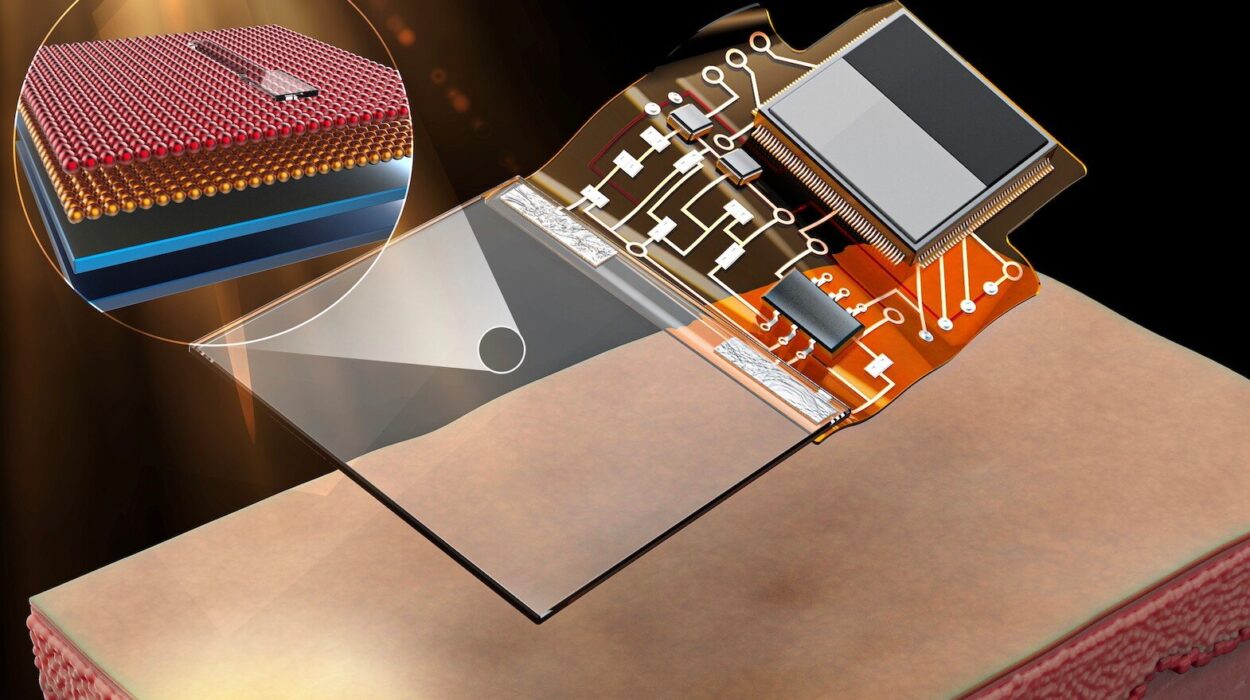For centuries, humans looked up at the stars and saw mystery, mythology, and metaphors. Today, we look up and see destinations. We’ve walked on the Moon, sent robots to Mars, and pierced the veil of deep space. But our rockets are still struggling against gravity’s grip, still relying on chemical fire like ancient blacksmiths pounding on cosmic doors. The truth is—our current technology is just a candle in the dark.
The next era of space travel won’t be just about more missions. It will be about new ways of thinking. Revolutionary ideas, born of physics, engineering, and human imagination, are reshaping how we might explore the cosmos. These are not fantasies—they are real, in labs, on drawing boards, or whispering just beyond the edge of scientific understanding.
Let’s embark on a journey through six transformative concepts that could redefine what it means to travel in space. These ideas are not just about moving faster or farther—they’re about becoming something more: a species that can finally call the stars home.
1. Nuclear Propulsion: Lighting the Cosmic Fuse
Imagine halving the time it takes to reach Mars. Imagine spacecrafts powered not by chemical explosions, but by the energy that lights up stars. That’s the promise of nuclear propulsion, and it’s not as far-fetched as it sounds.
Chemical rockets—what we use today—burn fuel to push us off the planet. They’re powerful, but inefficient. Most of the rocket’s weight is fuel, and it’s exhausted quickly. To reach Mars with current technology takes six to nine months, and astronauts are exposed to cosmic radiation and microgravity for dangerously long periods.
Enter Nuclear Thermal Propulsion (NTP). Here’s how it works: a nuclear reactor onboard heats a propellant, like hydrogen, and expels it at high speed through a nozzle. The result? About twice the efficiency of chemical rockets. With NTP, we could cut the Mars trip down to three or four months—a game-changer for crew safety and mission logistics.
There’s also Nuclear Electric Propulsion (NEP), where a reactor generates electricity to power ion thrusters. It’s not about speed—it’s about endurance. Think of a slow, steady push across the solar system. This could power deep-space missions to Jupiter’s moons, Saturn, and beyond.
NASA and DARPA are actively pursuing NTP projects. In 2023, NASA’s DRACO (Demonstration Rocket for Agile Cislunar Operations) received a boost in funding to develop a prototype by 2027.
Nuclear propulsion isn’t science fiction—it’s rocket science, upgraded.
2. Space Elevators: Climbing the Sky
Imagine an elevator that stretches 35,000 kilometers into the sky. No rocket. No thunderous launch. Just a calm, electric ascent into orbit—like stepping onto a sky-bound train. This is the vision of the space elevator, one of the most radical and captivating ideas in spaceflight.
The concept is deceptively simple. A tether is anchored to Earth at the equator and extends into geostationary orbit. At the other end, a counterweight holds the structure taut, using centrifugal force. Robotic climbers ascend the tether, carrying cargo and even humans into space.
The benefits are staggering. Launching into orbit could become 1/100th the cost of rocket launches. There would be no massive fuel requirements, no explosive risk, and far greater payload capacities. Resupply missions, satellite launches, and even interplanetary staging could become routine.
But there’s a catch: the tether.
To build a space elevator, we need a material stronger than anything we currently possess. Steel won’t cut it. Even Kevlar isn’t strong enough. But theoretical materials like carbon nanotubes or graphene—structures stronger than steel and lighter than air—might one day make it possible.
Companies like Obayashi Corporation in Japan are aiming for a space elevator by 2050. NASA has studied it. Researchers in China are exploring prototype tethers.
The idea seems absurd—until you realize that not long ago, so did airplanes.
3. Artificial Gravity: Ending the Spin of Sickness
Weightlessness might look fun, but it comes with a price. Astronauts in microgravity suffer from muscle atrophy, bone loss, fluid redistribution, and vision problems. Long-term exposure can wreck the human body.
To travel deeper into space—months to Mars, years to Jupiter—we’ll need to bring gravity with us. But how?
The answer might lie in the oldest trick in physics: centrifugal force. By spinning parts of a spacecraft, we can simulate gravity. It’s not true gravity—it’s the illusion of it, but our bodies respond to that illusion beautifully.
The most famous depiction of this is in the movie 2001: A Space Odyssey, where astronauts jog along the inside of a rotating habitat. Real-life designs echo this. Concepts like NASA’s Nautilus-X, the Kalpana One space station, and proposals from private companies all involve rotating rings or tori that spin to create a force that pushes inhabitants toward the outer wall.
The math is simple: the faster the spin and the larger the radius, the more comfortable the artificial gravity. But too much spin causes motion sickness, so finding the right balance is critical.
Artificial gravity could enable not just travel, but life: rotating habitats, orbiting cities, and Martian bases where gravity isn’t a memory, but a design feature.
4. Fusion Drives: Riding the Power of Stars
If nuclear thermal propulsion is the match, then nuclear fusion is the Sun. And if we can harness it, it could change everything.
Fusion—the process that powers stars—involves fusing light atoms (like hydrogen) into heavier ones (like helium), releasing colossal amounts of energy. Unlike fission, which splits atoms and leaves radioactive waste, fusion is cleaner and far more powerful.
A fusion drive would allow spacecraft to cruise the solar system at speeds unimaginable today. We could reach Mars in weeks, not months. A mission to Neptune could take a year instead of a decade.
The leading concept is the Direct Fusion Drive (DFD) being developed at Princeton Satellite Systems. It uses a compact fusion reactor to heat plasma, which is expelled to generate thrust. It’s not just a rocket—it’s a power plant and propulsion system in one.
There are also designs like the VASIMR (Variable Specific Impulse Magnetoplasma Rocket), which uses radio waves to ionize gas and magnetic fields to direct the plasma. Though not technically fusion, it offers high-efficiency electric propulsion, perfect for deep-space exploration.
Fusion is still in its infancy. We’ve yet to achieve net-positive energy on Earth, though projects like ITER in France are trying. But the dream is real: clean, limitless propulsion that could carry humanity beyond the solar system.
5. Space Habitats and Generation Ships: Living Beyond Earth
The future of space travel isn’t just about going somewhere. It’s about staying. For weeks. For years. For generations.
This is where space habitats enter the picture—massive structures that support human life indefinitely. Think O’Neill Cylinders—giant rotating tubes with artificial gravity, sunlight, water cycles, ecosystems, and cities. These habitats could orbit Earth, Mars, or even drift in deep space.
The goal? Independence from planets. A self-sustaining ecosystem in space. It’s not as impossible as it sounds. The International Space Station (ISS) already proves we can live in orbit for months. Now imagine scaling that up by 1,000x.
More radical is the concept of generation ships—spacecraft designed for interstellar travel lasting centuries. The original crew lives, dies, and is succeeded by their descendants. These ships would be closed-loop biospheres, floating micro-worlds with farms, schools, governance, and culture.
Would such a ship preserve Earth’s legacy—or evolve into something unrecognizably new?
Projects like Blue Origin’s Blue Habitats and SpaceX’s Mars City are early glimpses into permanent off-Earth living. Whether on planetary surfaces or free-floating in space, we are preparing to plant roots beyond our cradle.
6. Warp Drives and Wormholes: Breaking the Cosmic Speed Limit
Now we enter the wild frontier of physics—not just travel through space, but travel through spacetime.
According to Einstein’s theory of relativity, nothing can move faster than light. But relativity also allows for strange workarounds. One such concept is the Alcubierre Drive—a theoretical warp drive that compresses space in front of a spacecraft and expands it behind. The ship itself doesn’t move faster than light; instead, space itself moves.
It’s like standing still on a conveyor belt that carries you faster than anything else in the universe.
The Alcubierre Drive was long dismissed as a fantasy due to the requirement of negative energy, something not known to exist. But recent theoretical work—including from NASA’s Eagleworks Laboratory—has suggested ways to reduce the energy requirements and even potentially sidestep the need for negative mass.
Then there’s the idea of wormholes—bridges through spacetime connecting distant points. They could, in theory, allow instantaneous travel across galaxies. But again, they require exotic matter to stay open and remain highly speculative.
Still, every revolution begins as a dream. Quantum physics, dark energy, and multidimensional theories might one day provide the tools to bend space the way sailors once learned to harness wind.
These aren’t next-decade technologies. They’re next-century, perhaps. But they represent the ultimate destination of space travel: not just moving through space, but rewriting its rules.
A Sky With No Ceiling
As we look forward to the next hundred years, the future of space travel lies not in one path, but many—each strange, bold, and bursting with possibility. From nuclear rockets to star-hopping wormholes, we are standing on the edge of something profound.
We are no longer confined by Earth’s blue cradle. Our ambitions are stretching across the solar system, toward the stars. The journey ahead will test us—not just our science, but our will, our wisdom, and our unity as a species.
But it is a journey worth taking. Because somewhere, light-years away, a planet spins under an unfamiliar sun. And one day, a human may stand there, breathe its alien air, and remember this moment—when we chose to reach instead of retreat.
The future of space travel is not just about technology. It is about courage.
And we are almost ready.






